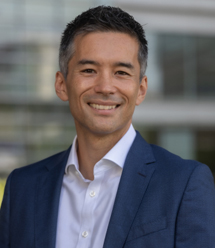Ted K. Yanagihara, MD, PhD
Breaking New Ground Using GRID for Sarcoma

Ted K. Yanagihara, MD, PhD, and his colleagues at the University of North Carolina at Chapel Hill are testing a special radiation therapy technique called GRID therapy in patients with sarcoma of the arms and legs. In GRID therapy, patients are treated with a very high dose of radiation to small areas of their tumor while adjacent areas get a low dose in a grid-like pattern. Evidence suggests that areas of cancer that receive a very low dose of radiation but are close to areas of high-dose radiation still respond very well to treatment. Understanding how this happens and establishing that GRID is safe and effective are critical steps toward helping more patients with cancer benefit from this promising therapy.
“GRID has been around in one form or another for decades and despite many anecdotal reports of impressive clinical responses, we do not have high quality evidence to guide its use in general practice. Further, there is a growing literature evaluating the cellular effects of GRID in the lab, but data in humans is very limited. My collaborators and I have planned this translational study to begin answering clinical questions about safety and efficacy in a prospective clinical trial while simultaneously performing key correlative studies to evaluate the mechanisms of GRID’s action. We hope this study can help patients with extremity soft tissue sarcoma while also furthering our knowledge of GRID and how the treatment could be used in other types of cancer,” says Dr. Yanagihara.
With support from ROI, Dr. Yanagihara’s team is:
- Conducting a prospective clinical trial in which patients with sarcoma receive a priming dose of GRID therapy before standard treatment, which includes conventional radiation therapy and surgery to remove the tumor.
- Analyzing the safety of GRID therapy to ensure there are no unexpected side effects compared to prior experience with the standard treatment without GRID.
- Evaluating the effectiveness of adding GRID therapy to standard treatment by examining microscopic changes in the tumor once it has been surgically removed.
- Investigating the biological effects of GRID to determine if it activates an immune response that increases the number of tumor cells destroyed.
GRID therapy may provide an opportunity to deliver a higher dose of radiation with minimal additional side effects to patients with tumors that are very large or located close to other organs. If successful, the research that Dr. Yanagihara and his colleagues are conducting would propel larger clinical studies and could establish GRID therapy as a potent treatment for sarcoma and other treatment resistant cancers that improves quality of life and outcomes for patients.
For more information about the clinical trial, please contact:
Lineberger Clinical Research
Phone: 919-966-4432
Email: cancerclinicaltrials@med.unc.edu
Location: UNC Hospitals














